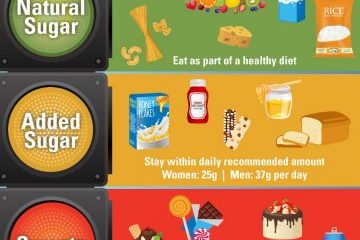Fitness & Exercise
Workout Plan 30 Days
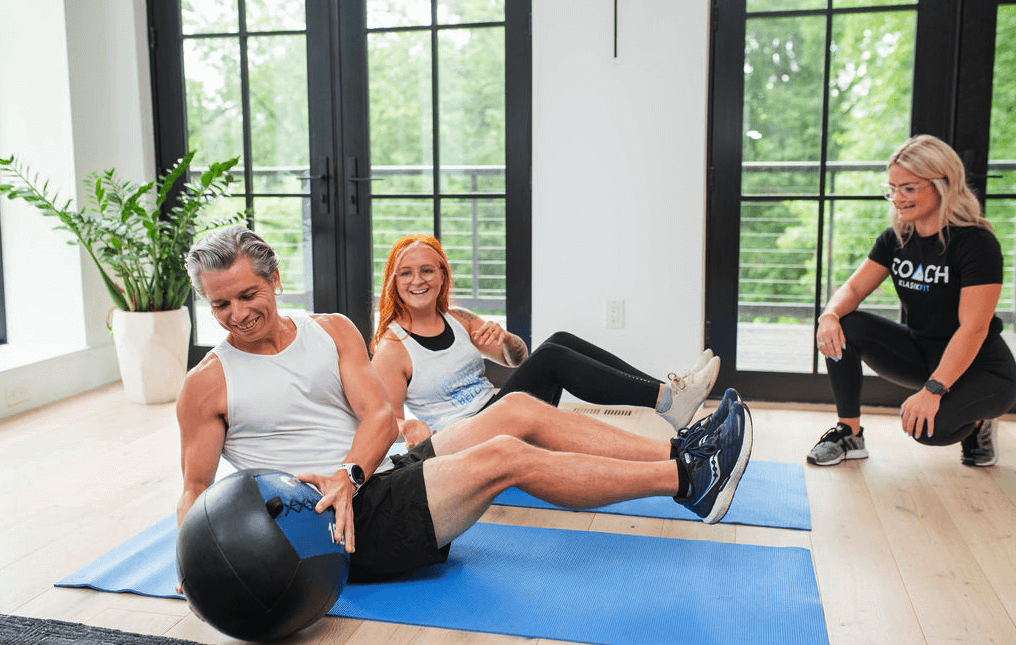
Workout Plan 30 Days: Achieve Your Fitness Goals with a Personalized Plan. Transform your fitness in just 30 days! With our personalized Workout Plan 30 days, reach your goals easily. Start your journey to a healthier you today!

Introduction to the 30-Day Workout Plan
Setting fitness goals is vital for everyone. A well-structured plan helps you stay engaged. Having a clear vision of what you want to achieve boosts motivation. In my own experience with the Workout Plan 30 days, I saw remarkable results. Consistency turned my initial efforts into lasting lifestyle changes. This article will guide you on creating a personalized workout plan. By the end of this post, you will be ready to achieve your own fitness goals.
Benefits of a 30-Day Workout Plan
Committing to a Workout Plan 30 days offers numerous advantages. First, it provides a sense of structure. Having a defined path makes it easier to follow through. Second, short-term challenges encourage accountability. You will feel motivated to complete your workouts. On top of that, 30 days is a reasonable length for measuring progress.
With a customized plan, you can target specific fitness levels & areas. Whether you want to build strength, lose weight, or improve flexibility, a focused program will help. And another thing, variety keeps workouts from becoming monotonous. Changing routines means you will engage different muscle groups, promoting overall fitness. By the end of this period, you should feel accomplished & want to continue your fitness journey.
| Benefits | Description |
|---|---|
| Accountability | Stay committed to your goals. |
| Structure | Know what to expect each day. |
| Variety | Different workouts prevent boredom. |
| Progress Tracking | Easily monitor your improvements. |
How to Personalize Your Workout Plan
Creating a customized plan is key to achieving your goals. Begin by identifying your fitness level. Assess whether you are a beginner, intermediate, or advanced. Next, set specific goals for the Workout Plan 30 days. Are you focusing on strength, endurance, or flexibility? Your goals will shape your workout routines.
Consider incorporating different exercise types. These include cardiovascular exercises, strength training, & flexibility exercises. Build a balanced program that challenges you. For example, you might schedule weight training three days a week & cardio two days. Be sure to include rest days to allow your body to recover.
- Identify your fitness level.
- Set clear, achievable goals.
- Include various types of exercises.
- Schedule rest days for recovery.
Essential Elements of Your Workout Plan
Every effective plan includes essential elements. First, focus on workout duration & intensity. Consider starting with 30-45 minutes per session. Gradually increase intensity to boost performance as your fitness improves. Next, create a weekly schedule. For example, Monday can be upper body strength, while Tuesday is for cardio. This structure simplifies planning.
Include a warm-up & cool-down in each session. Warming up allows the body to prepare for exercise. Cooling down helps prevent injuries by gradually reducing heart rate. Finally, track your progress. You should have a method to note achievements. Apps, journals, or spreadsheets work well for this purpose. Progress tracking motivates you to stay on course.
| Workout Elements | Description |
|---|---|
| Duration | 30-45 minutes per session. |
| Intensity | Start low & gradually increase. |
| Warm-up | Essential before any exercise. |
| Cool-down | Prevents injuries after workouts. |
Nutrition & Recovery: Key to Success
Nourishment plays a significant role in achieving your fitness goals. Eating the right foods enhances performance & recovery. Begin by planning your meals around your workouts. Focus on nutrient-dense foods that fuel your body. Proteins, carbohydrates, & healthy fats are all essential. Balanced meals will help maintain energy levels throughout your Workout Plan 30 days.
Stay hydrated by drinking enough water. Water helps maintain energy & supports recovery. And another thing, pay attention to sleep. Quality rest is crucial for muscle recovery & growth. Aim for 7-9 hours of sleep per night to allow your body to heal & adapt. Prioritize these factors for the best outcomes during your fitness journey.
- Eat balanced meals with nutritious foods.
- Stay hydrated throughout the day.
- Ensure adequate sleep for recovery.
- Plan meals around your workouts.
Sample 30-Day Workout Plan
A sample workout plan will help you visualize your goals. Below is a simple example of a balanced Workout Plan 30 days. Modify it based on your fitness level & preferences.
| Day | Workout |
|---|---|
| Monday | Upper Body Strength |
| Tuesday | Cardio (Running/Cycling) |
| Wednesday | Lower Body Strength |
| Thursday | Yoga/Flexibility |
| Friday | Full Body Circuit |
| Saturday | Active Rest (Walking) |
| Sunday | Rest Day |
Overcoming Challenges During Your 30-day Plan
Challenges can arise while following your Workout Plan 30 days. It’s essential to stay mentally strong. First, be prepared for days when motivation wanes. Remember your goals & visualize success. On those tough days, simply showing up is victory. You will feel accomplished, even if you don’t give 100% effort. Progress is not always linear.
Second, listen to your body. If you’re hurting or fatigued, allow yourself rest. Ignoring pain can lead to injury. Lastly, find a workout buddy or join a class. Having support can increase your accountability & motivation. Finding ways to enjoy the process makes the journey enjoyable.
- Visualize your success to stay motivated.
- Listen to your body to avoid injury.
- Consider working out with a friend.
- Focus on progress, not perfection.
Tracking Progress & Adjustments
Monitoring your progress is crucial to staying on track. Each week, assess your performance. Take note of improvements in strength, endurance, & general fitness levels. Use this information to adjust your Workout Plan 30 days. As you get stronger, increase the intensity of your workouts. Changes might include adding weight, increasing distances, or reducing rest times.
Consider measuring non-scale victories as well. These can include fitting into clothes better or completing activities with ease. Regular assessments keep you engaged & motivated. Celebrate small wins, as they contribute to your overall journey. Staying positive & flexible in your mindset will bring success.
| Tracking Progress | Method |
|---|---|
| Strength | Record weights lifted weekly. |
| Endurance | Track distances run or cycled. |
| Body Measurement | Measure waist, hips, & more. |
| Mood & Energy | Journal daily feelings & energy updates. |
Community & Support
Engaging with a community can accelerate your fitness journey. Join local classes or online fitness forums. Sharing your challenges & successes builds camaraderie. On top of that, attending group classes offers motivation & accountability. Being around like-minded individuals enhances you further.
Consider accountability partners to share progress. Having someone to check-in with can augment your commitment. They can provide encouragement & feedback. Remember, support can make a huge difference in adherence to your Workout Plan 30 days. Make connections with communities that share your goals.
FAQs
What is a 30-day workout plan?
A 30-day workout plan is a structured program to improve fitness. It focuses on consistency over four weeks to establish habits & achieve goals.
How do I stay motivated during my fitness journey?
Set achievable milestones & connect with supportive community. Celebrate every small success to maintain your motivation.
Can I adapt the 30-day workout plan to suit my needs?
Yes! Modify the plan based on your fitness level & goals. Feel free to change exercises & schedules as needed.
What should I eat during my 30-day workout plan?
Focus on balanced meals with proteins, carbs, & healthy fats. Stay hydrated to support workouts & recovery.
Conclusion
Creating a Workout Plan 30 days can transform your fitness journey. Understand your goals, personalize your approach, & remain consistent. With the right strategies & support, you can achieve remarkable progress.

Fitness & Exercise
The Best Proven Diets for Men’s Health And Learn With Glow Natural Wellness

The Best Diets for Men’s Health: Optimize Nutrition for glowing natural wellness. Discover The Best Diets for Men’s Health that boost wellness & energy. Simple tips to optimize nutrition for a healthier, happier life await you here! Try to glow natural wellness.

The Importance of Nutrition for Men’s Health
A balanced diet plays a pivotal role in overall health & wellness, particularly for men. Nutrition affects everything from energy levels to mental clarity & physical performance. For men, ensuring that dietary choices support health objectives is crucial. Consuming the right foods can enhance muscle growth, boost testosterone levels, & even promote heart health. When I started focusing on optimizing my nutrition, I noticed significant improvements in my energy & mood, underscoring how essential The Best Diets for Men’s Health are in achieving glow natural wellness.
Key Nutrients for Men’s Health
Various nutrients are especially important in maintaining optimal health for men. These include proteins, healthy fats, vitamins, & minerals, including zinc & magnesium. Proteins are foundational for muscle repair & growth, making them crucial for active men. Healthy fats, such as omega-3 fatty acids from fish, support brain health & reduce inflammation. Vitamins & minerals are essential for numerous bodily functions; for instance, zinc is vital for testosterone production. A well-rounded intake of these nutrients is a cornerstone of The Best Diets for Men’s Health.
| Nutrient | Benefits |
|---|---|
| Proteins | Promotes muscle growth & repair |
| Healthy Fats | Supports brain function & reduces inflammation |
| Vitamins | Crucial for various bodily functions |
| Minerals | Essential for hormone production & metabolic processes |
The Best Diets for Men’s Health
Several diets have gained popularity, each promoting specific health benefits that cater to men’s unique needs. Among them, the Mediterranean diet stands out for its emphasis on whole grains, lean protein, healthy fats, & a variety of fruits & vegetables. Another viable option is the high-protein diet, suitable for men looking to build muscle & improve body composition. The DASH diet, designed to combat hypertension, is also noteworthy for its focus on fruits, vegetables, & low-fat dairy. Each of these diets can optimize health when followed appropriately. Make sure a routine to glow natural wellness.
- Mediterranean Diet
- High-Protein Diet
- DASH Diet
The Mediterranean Diet: A Balanced Approach
The Mediterranean diet excels in promoting overall health & reducing the risk of chronic diseases. Rooted in the dietary habits of Mediterranean countries, this eating pattern emphasizes whole foods, such as fruits, vegetables, legumes, nuts, & fish, while limiting processed foods & sugars. The high amounts of antioxidants & healthy fats support heart health & reduce inflammation, making this one of The Best Diets for Men’s Health. And don’t forget, the diet includes moderate portions of dairy & red wine, contributing to its pleasure & sustainability.
Benefits of the Mediterranean Diet
- Promotes heart health
- Supports weight management
- Reduces risk of diabetes
- Improves cognitive function
High-Protein Diet for Muscle Building
A high-protein diet is particularly beneficial for active men looking to enhance muscle mass & strength. This diet typically recommends consuming a higher percentage of calories from protein sources, such as lean meats, eggs, & dairy, while managing carbohydrate & fat intake. Studies indicate that protein significantly aids in muscle recovery & can lead to improved body composition. Adequate protein intake can also support weight loss by increasing satiety, making it a popular choice among men aiming for fitness goals. Including sources like chicken breast, turkey, & beans can make it easier to achieve protein targets.
| Protein Source | Protein Content (per 100g) |
|---|---|
| Chicken Breast | 31g |
| Eggs | 13g |
| Lentils | 9g |
| Tofu | 8g |
The DASH Diet: Heart Health Focus
The DASH diet, which stands for Dietary Approaches to Stop Hypertension, emphasizes low sodium intake & encourages consumption of a variety of nutrient-rich foods. It incorporates high amounts of fruits, vegetables, whole grains, & low-fat dairy, contributing to improved cardiovascular health. By focusing on nutrient-dense foods, this diet can help men manage blood pressure & reduce the risks associated with heart disease. Following the DASH diet is an actionable step for those interested in maintaining heart wellness, establishing it as one of The Best Diets for Men’s Health.
DASH Diet Guidelines
- Limit sodium to 1,500-2,300 mg per day
- Eat fruits & vegetables at every meal
- Include whole grains as primary carbs
- Consume lean meats & limit red meat
Plant-Based Diets: A Growing Trend
Increasing numbers of men are exploring plant-based diets, which can offer various health benefits. Such diets are rich in fiber, vitamins, & antioxidants, primarily sourced from fruits, vegetables, grains, nuts, & seeds. Research suggests that plant-based diets can lower the risk of chronic diseases, including heart disease & certain cancers. Men who adopt this way of eating may also experience weight loss & enhanced energy levels. Prioritizing whole, minimally processed plant foods can provide sufficient protein, making plant-based diets a valid option within The Best Diets for Men’s Health.
| Plant-Based Food | Health Benefit |
|---|---|
| Quinoa | High in protein & fiber |
| Chickpeas | Excellent source of plant-based protein |
| Spinach | Rich in vitamins & minerals |
| Walnuts | Supports heart health |
Intermittent Fasting: A Flexible Approach
Intermittent fasting is gaining traction as a powerful approach to improve health & manage weight. This eating pattern alternates between periods of eating & fasting, offering flexibility while allowing the body to reset & process consumed nutrients effectively. Various methods exist, such as the 16/8 method, where eating occurs within an 8-hour window, followed by a 16-hour fast. Research indicates that intermittent fasting can help with weight loss, improve metabolic health, & enhance brain function. For men seeking to optimize their nutrition, this method aligns well with The Best Diets for Men’s Health.
Tips for Intermittent Fasting
- Stay hydrated during fasting periods
- Focus on nutrient-dense meals during eating windows
- Listen to your body’s hunger signals
- Gradually ease into fasting if you’re new to it
Personalization: Finding What Works for You
It is essential to recognize that no single diet suits everyone. Individual preferences, lifestyle, & health goals will dictate the best approach for each person. Experimenting with different eating patterns can help men identify which diet aligns with their needs. Keeping a food diary can also provide insights into how certain foods affect energy levels, mood, & overall well-being. Ultimately, the journey toward optimal nutrition requires a personalized approach that considers individual circumstances. Incorporating elements from The Best Diets for Men’s Health can create a sustainable, enjoyable eating habit.
Common Mistakes to Avoid
When transitioning to healthier eating habits, avoiding common pitfalls can make a significant difference in outcomes. Skipping meals, relying too much on processed foods, or not balancing macronutrients can hinder progress. And another thing, neglecting hydration is a mistake that can lead to fatigue & decreased performance. Understanding portion sizes & listening to hunger cues will also aid in creating a sustainable, healthy lifestyle. Recognizing these challenges helps men optimize their diet in line with The Best Diets for Men’s Health.
- Don’t skip meals
- Avoid processed foods
- Mind portion sizes
- Stay hydrated
Conclusion: The Next Steps in Nutrition
Achieving optimal nutrition requires determination, experimentation, & a willingness to adapt. Building a meal plan based on the principles of The Best Diets for Men’s Health can lead to improved wellness & a better quality of life. Finding support from nutritionists, joining local health groups, or even using apps to track progress can enhance the dietary journey. As you embark on this path, remember that the focus should be on sustainable changes that work for you, ensuring lasting health benefits.

glow natural wellness
What are the best diets for men’s health to glow natural wellness
The best diets for men’s health typically include a balance of whole foods, lean proteins, healthy fats, & a variety of fruits & vegetables. Popular options include the Mediterranean diet, which emphasizes olive oil, fish, whole grains, & plant-based foods, & the DASH diet, which focuses on reducing sodium & increasing nutrient-rich foods.
How can men optimize their nutrition for better health?
Men can optimize their nutrition by focusing on portion control, incorporating a wide range of nutrients, staying hydrated, & limiting processed foods & added sugars. Planning meals ahead & including sources of protein, healthy fats, & fiber can also contribute to better overall health.
Are low-carb diets effective for men’s health?
Low-carb diets can be effective for men’s health, particularly for weight loss & blood sugar control. They often promote the consumption of proteins & healthy fats, which can help in reducing hunger & cravings. Be that as it may, it’s essential to ensure that men still receive a balanced intake of vitamins & minerals from other food sources making glow natural wellness.
What role does protein play in a man’s diet?
Protein plays a vital role in a man’s diet as it helps build & repair tissues, supports muscle growth, & contributes to overall health. Adequate protein intake can also enhance satiety, which may aid in weight management & help maintain energy levels throughout the day.
Can intermittent fasting benefit men’s health?
Intermittent fasting can benefit men’s health by promoting weight loss, improving metabolic health, & potentially increasing longevity. This dietary approach encourages periods of eating & fasting, allowing the body to use stored fat for energy during fasting periods while also providing a structured eating window.
What foods should men focus on for heart health?
Men should focus on foods that promote heart health, such as fatty fish (like salmon & mackerel), nuts, seeds, whole grains, fruits, & vegetables. These foods are rich in omega-3 fatty acids, fiber, antioxidants, & other nutrients that can help reduce cholesterol levels & lower the risk of heart disease.
Is a plant-based diet good for men?
A plant-based diet can be very beneficial for men as it often includes high amounts of fruits, vegetables, legumes, nuts, & whole grains. This type of diet is associated with a lower risk of chronic diseases, improved heart health, & better management of body weight. Be that as it may, it is important to ensure adequate protein & nutrient intake.
How often should men eat to maintain a healthy diet?
Men should aim to eat regular meals & snacks throughout the day to maintain energy levels & support metabolism. Typically, three balanced meals & one or two healthy snacks can be effective. Listening to hunger cues & avoiding excessive eating at one time is key to a healthy diet. Make sure the diets and making the glow natural wellness.
What are the best snacks for men to maintain energy?
The best snacks for men looking to maintain energy include options rich in protein & fiber, such as Greek yogurt with fruit, nuts, whole-grain crackers with hummus, or sliced vegetables with guacamole. These snacks provide sustained energy & prevent energy crashes throughout the day.
How can men manage their weight through diet?
Men can manage their weight through diet by focusing on portion sizes, consuming nutrient-dense foods that are lower in calories, & maintaining a balanced intake of macronutrients. Regular physical activity combined with mindful eating practices can also support weight management efforts.
What vitamins & minerals are important for men’s health?
Key vitamins & minerals important for men’s health include vitamin D for bone health, vitamin B12 for energy, zinc for immune function, & omega-3 fatty acids for heart health. It’s essential to consume a varied diet to meet these nutritional needs or consider supplements if recommended by a healthcare provider.

Conclusion
In summary, finding The Best Diets for Men’s Health is all about choosing foods that nourish & energize. A balanced mix of proteins, healthy fats, & plenty of fruits & vegetables can make a huge difference. Remember, the key is sustainability. Pick a diet you can stick with. Whether it’s the Mediterranean approach or a focus on lean meats & whole grains, make sure it fits your lifestyle. By following The Best Diets for Men’s Health, you can boost your wellness, energy levels, & overall well-being. Start today, & watch how your health improves and you glow natural wellness.
Fitness & Exercise
Rest Days in Your Fitness Routine
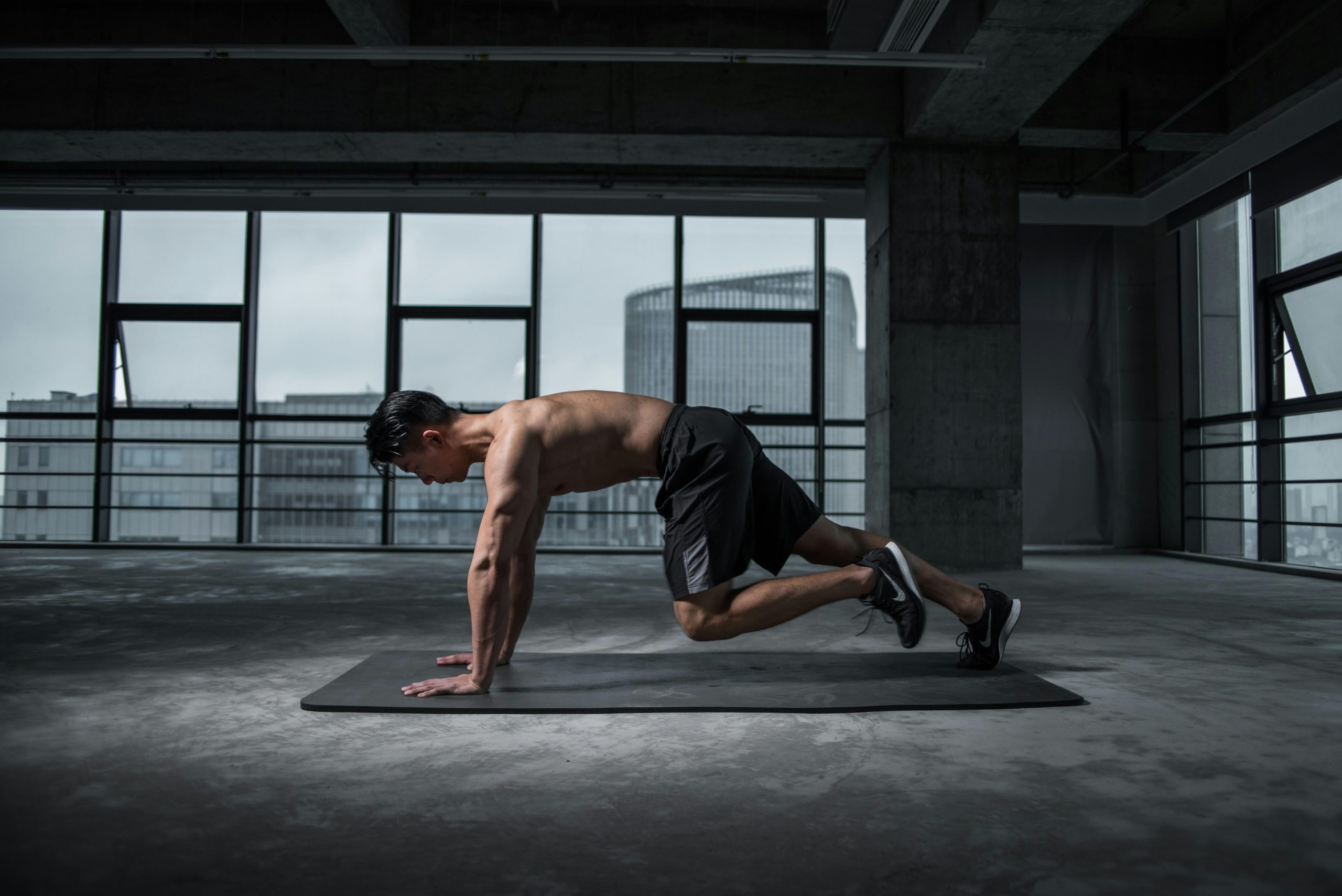
Rest Days in Your Fitness Routine: Boost Performance & Recovery Tips. Discover why Rest Days in Your Fitness Routine are essential for peak performance. Uncover tips for effective recovery & boost your workout results!
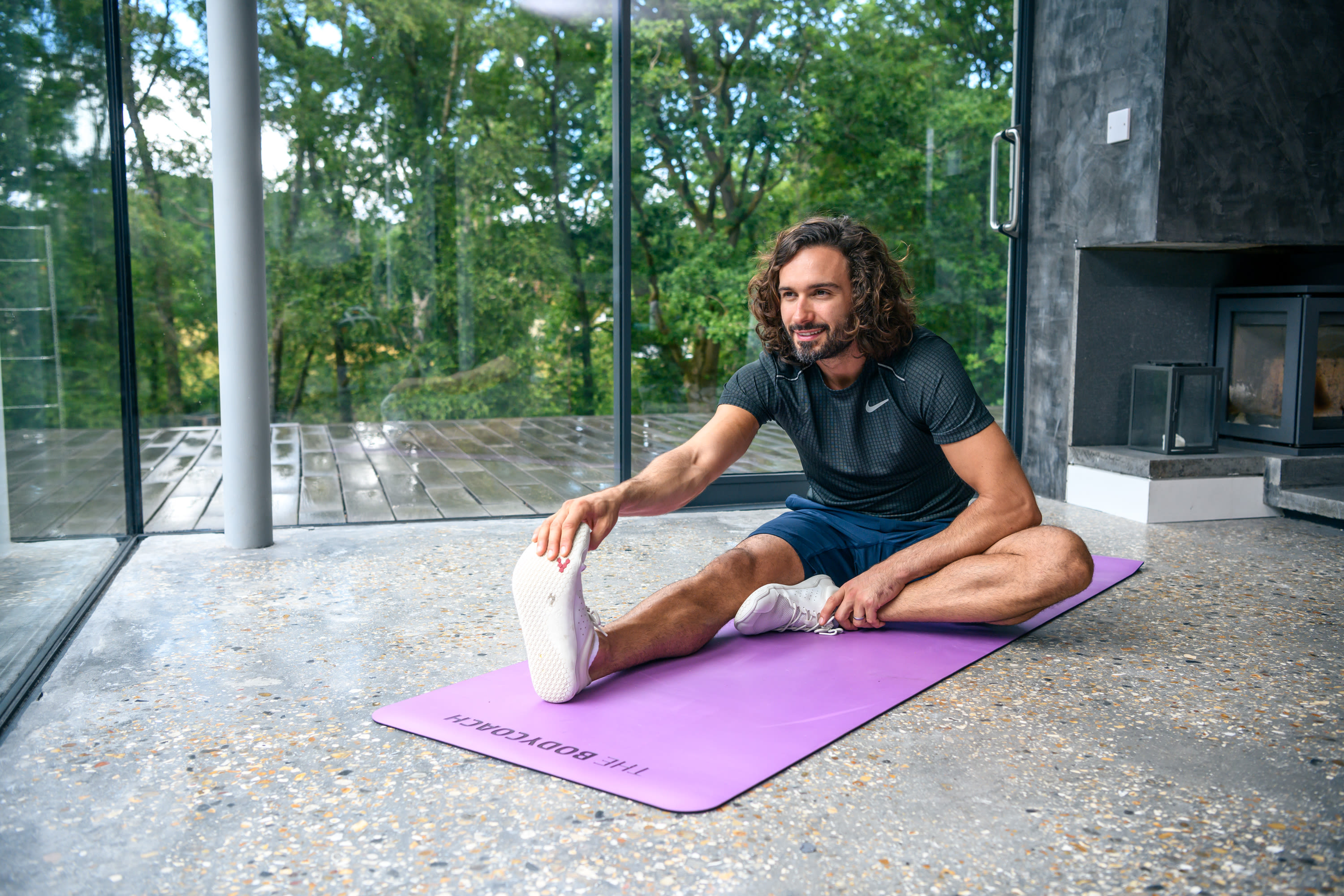
Why Rest Days Matter in Your Fitness Routine
Rest days play a crucial role in your fitness routine. They help you recover & improve your performance. Training hard without breaks can lead to fatigue & even injury. It’s during rest that your body repairs & strengthens itself. This is when muscles recover & grow. Incorporating rest into your schedule ensures continuity in your workouts. Overtraining can hinder progress & reduce motivation. Consequently, rest days can enhance your results. A balanced workout plan includes these essential breaks.
Benefits of Incorporating Rest Days
Adding rest days to your fitness routine brings several advantages:
- Muscle Recovery: Rest helps in repairing muscle tissues.
- Injury Prevention: It reduces the risk of strains & injuries.
- Mental Refreshing: A break helps in mental recovery too.
- Performance Boost: Rest improves overall physical performance.
- Improved Sleep: Recovery helps in better sleep quality.
Prioritizing your rest days leads to longer & more consistent workouts in the long run. Use these days wisely to recharge & refocus.
Different Types of Rest Days
Rest days are not all equal. They vary based on your goals & fitness levels. Here are some common types:
| Type of Rest | Description |
|---|---|
| Complete Rest | No physical activity at all. |
| Active Rest | Light activity, like walking or yoga. |
| Recovery Days | Low-intensity workouts to aid recovery. |
| Deload Days | Less intensity in your usual workout. |
Understanding these types can help you plan better. Each type serves a different purpose & suits different needs.
When to Take Rest Days
Knowing when to take a break is essential. Signs you need a rest day include:
- Persistent Fatigue: Feeling drained despite sleeping well.
- Increased Irritability: Mood swings or loss of motivation.
- Chronic Soreness: Muscle soreness that won’t go away.
- Decreased Performance: Lifting less weight or slower runs.
- Increased Injuries: If you notice recurring aches or pains.
Listening to your body can prevent burnout. Schedule rest based on your feelings & performance.
How to Make the Most of Your Rest Days
Utilizing your rest days effectively ensures optimal recovery. Here are some best practices:
| Activity | Description |
|---|---|
| Hydration | Drink plenty of water to aid recovery. |
| Proper Nutrition | Focus on balanced meals & protein intake. |
| Gentle Stretching | Improve flexibility & circulation. |
| Mindfulness | Consider activities like meditation. |
These practices reduce muscle soreness & enhance your fitness journey. Investing time in recovery can lead to better performance in workouts.
Common Misconceptions About Rest Days
Many myths surround the concept of rest days. Here are some misconceptions:
- Rest Means You’re Lazy: Rest is crucial for performance.
- Active Individuals Don’t Need Rest: Everyone needs recovery.
- Skipping Means More Gains: Overtraining hinders progress.
- No Rest on Workout Days: The body can’t recover properly.
Debunking these myths can help you develop a healthier attitude toward rest. Knowledge boosts performance & aids in recovery.
Quote on Rest Days
“Rest is not a sign of laziness but a step towards progress.” – Ronny Schuster
Creating a Rest Day Schedule
Planning your rest days helps maintain consistency. Here’s a simple way to create a schedule:
- Determine Your Workout Routine: Identify high & low-intensity days.
- Decide on Rest Days: Choose 1-2 days weekly to rest.
- Include Active Rest Options: Plan light activities for recovery days.
- Listen to Your Body: Adjust as needed based on fatigue & performance.
A well-structured rest day schedule promotes balance in your fitness journey. Adjust your routine based on your body’s signals.
Rest Days & Mental Health
Rest days significantly impact your mental well-being. Regular breaks from intense workouts help reduce stress levels. They allow you to enjoy your routine without pressure. Mental fatigue can hinder progress as much as physical fatigue. Taking time off can help boost your mood & motivation. Engaging in enjoyable activities during rest days can enhance relaxation.
Combining Rest Days with Other Recovery Techniques
Observable benefits emerge from mixing rest days with recovery techniques. These include:
- Massage Therapy: Aiding relaxation & blood flow.
- Foam Rolling: Reducing muscle tension.
- Cold Showers: Alleviating sore muscles.
- Yoga: Enhancing flexibility & mindfulness.
These techniques complement your rest days well. They promote active recovery & improve performance in the long run.
FAQs
How Many Rest Days Should I Take?
The number of rest days depends on your activity level. Generally, one to two days is recommended weekly. Adjust based on your body’s needs.
Can I Work Out Lightly on Rest Days?
Yes! Engaging in light activities like walking or stretching is beneficial. Keep it low-intensity to allow for recovery.
What Are Signs That I Need Extra Rest Days?
Signs include persistent fatigue, chronic soreness, & decreased performance. Listen to your body & adjust your schedule accordingly.
Is It Okay to Take Two Rest Days in a Row?
Yes! If you feel fatigued, taking two consecutive rest days is acceptable. Prioritize your health & recovery to enhance performance.
How Does Nutrition Impact My Rest Days?
Proper nutrition aids recovery. Focus on hydration & nutrient-dense meals. Protein & healthy fats are vital for muscle repair.
Conclusion
Rest Days in Your Fitness Routine are essential for optimal performance & recovery. Taking the time to rest leads to improvements in both mental & physical health. Ensure you schedule rest & listen to your body’s needs. Prioritize your wellbeing with adequate recovery. Doing so will enhance your overall fitness progress.

Fitness & Exercise
Everything You Need to Know About HIIT Workouts and Benefits
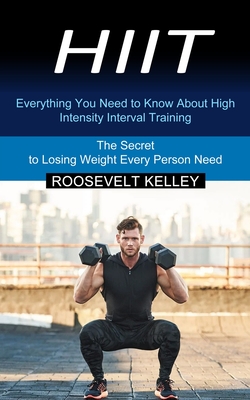
Everything You Need to Know About HIIT Workouts & Benefits. Discover everything you need to know about HIIT workouts, their benefits, & how they can boost your fitness. Get started on your journey today!

What is HIIT?
High-Intensity Interval Training, or HIIT, is a workout method that alternates between intense bursts of activity & periods of lower-intensity exercise or rest. Usually, a HIIT session lasts from 10 to 30 minutes. This format is effective for improving cardiovascular fitness, building strength, & burning calories. During each period of high intensity, your heart rate increases significantly. This increase pushes your cardiovascular system to adapt, resulting in improved efficiency over time.
HIIT workouts may include various exercises, such as sprinting, cycling, bodyweight exercises, & more. You can customize HIIT workouts based on your needs & fitness level. The flexibility of HIIT makes it a favorite among fitness enthusiasts. You can do HIIT workouts anywhere, including at home or the gym.
Benefits of HIIT Workouts
HIIT workouts offer numerous benefits, making them a popular choice. One benefit is time efficiency. Traditional workouts may take an hour or more, while a HIIT session can be completed in 20-30 minutes. This helps fit exercise into busy schedules. Another advantage is that HIIT can burn more calories in a shorter time than steady-state cardio. Post-exercise, your body will keep burning calories due to the afterburn effect, known as excess post-exercise oxygen consumption (EPOC).
And another thing, HIIT can improve cardiovascular health. Research shows that this training method can enhance heart function & lower blood pressure. HIIT may also help increase metabolic rate & improve aerobic & anaerobic endurance. This workout method can push your limits & help you achieve fitness goals faster. The simplicity of doing HIIT anywhere also adds to its appeal. On days you lack time, a 15-minute HIIT workout can still be highly effective.
How to Begin HIIT Workouts
Starting HIIT workouts requires a few simple steps. First, assess your fitness level & define your goals. If you’re new to exercise, consider beginning with lower-intensity exercises. You can gradually increase intensity as you become comfortable. Always warm up before beginning a HIIT session to avoid injuries. A good warm-up prepares your body for intense work.
Next, choose your exercises wisely. You might consider bodyweight exercises like burpees, jumping jacks, or squats. You can also incorporate cardio activities like running or cycling. Design your workout by alternating high-intensity intervals with rest or lower-intensity periods. For example, work hard for 30 seconds, then rest for 30-60 seconds. Repeat this for a total of 15-20 minutes. And another thing, cool down after your workout. A cool-down session can assist in recovery & flexibility.
Sample HIIT Workout
Here is a sample HIIT workout you can try at home. It requires no equipment & can be performed easily. Remember to warm up before starting & cool down afterward. The format includes 30 seconds of intense exercise followed by 30 seconds of rest.
| Exercise | Duration |
|---|---|
| Burpees | 30 seconds |
| Rest | 30 seconds |
| High Knees | 30 seconds |
| Rest | 30 seconds |
| Jump Squats | 30 seconds |
| Rest | 30 seconds |
| Mountain Climbers | 30 seconds |
| Rest | 30 seconds |
Repeat the circuit 3-4 times based on your fitness level. Adjust rest durations as needed. Over time, as you build stamina, you can increase intensity or reduce rest time.
HIIT Equipment Options
While bodyweight exercises work well for HIIT, you can also incorporate equipment. Here are a few equipment options:
- Dumbbells
- Kettlebells
- Resistance bands
- Medicine balls
- Jump ropes
Each equipment type offers additional variety & intensity to HIIT workouts. For example, use kettlebells for exercises like swings or goblet squats. Resistance bands can be utilized for exercises such as rows & chest presses.
Common Mistakes to Avoid During HIIT
When practicing HIIT workouts, be aware of common mistakes. These errors can hinder efficiency & lead to injuries. One frequent mistake is improper form. Always prioritize quality over quantity. If you’re too tired to maintain proper movements, consider reducing intensity or duration. Another mistake includes skipping warm-up & cool-down routines. These practices help to prepare your body for exercise & recover after you finish.
Overtraining can also be an issue. HIIT is intense, so give your body adequate rest. Plan your workouts weekly for balance. Finally, don’t forget to listen to your body. If something feels off, consult a professional or adjust your routine.
HIIT for Weight Loss
HIIT can be remarkably effective for weight loss. The high calorie burn during workouts is a primary factor. The intensity helps to torch calories more than steady-state workouts in a similar time frame. On top of that, HIIT boosts your metabolism after sessions. This effect allows your body to continue burning fat while you rest.
Incorporating HIIT into a balanced diet enhances its effectiveness. Following healthy eating habits confirms that your body has the necessary nutrients to recover. Pairing HIIT with balanced nutrition can surpass simple dieting approaches alone. Combine exercises & nutrition to create a sustainable weight-loss plan.
HIIT & Endurance Training
HIIT complements endurance training remarkably well. If you’re training for long runs or cycling events, HIIT can help improve your speed & stamina. Performing HIIT allows your body to adjust to varying intensities. This adaptability can transfer to endurance activities, making them feel easier & more productive.
And another thing, HIIT can benefit anaerobic capacity. This aspect is vital for activities where short bursts of performance matter, like sprints. Many athletes find that incorporating HIIT improves overall performance. As a result, you may find it easier to conquer long distances with improved power during sprints.
“Everything You Need to Know About HIIT Workouts & Benefits is essential for anyone looking to improve their fitness levels.” – Rosetta Cronin
How Often Should You Do HIIT?
The frequency of HIIT workouts depends on your fitness level & goals. Beginners might start with two sessions per week. This allows the body time to adapt. As your fitness level improves, you can increase to three or four sessions per week. Be that as it may, always assure that you maintain a balanced routine. Mixing HIIT with steady-state cardio, strength training, & flexibility is vital to physical health.
Listening to your body & adjusting workout intensity is crucial. If soreness persists or you feel fatigue, take a break. Recovery is just as important as the workout itself. It allows your muscles to heal & grow stronger.
FAQ
What are HIIT workouts good for?
HIIT workouts are great for burning fat, improving cardiovascular health, & increasing endurance.
Can beginners do HIIT workouts?
Yes, beginners can perform HIIT workouts. Start with lower-intensity exercises & gradually increase intensity.
How long should a HIIT workout last?
A HIIT workout can last between 10 to 30 minutes. Adjust session length based on your fitness level.
Is rest important in HIIT?
Yes, rest periods are crucial for effective HIIT sessions. They help maintain intensity during workouts.
Conclusion
In conclusion, Everything You Need to Know About HIIT Workouts & Benefits centers around flexibility, efficiency, & effectiveness. From the numerous benefits like improved cardiovascular health to weight loss, HIIT is suitable for anyone interested in fitness. With simple strategies to start, a diverse range of exercises, & the potential for progress, HIIT stands out as an excellent option to meet your fitness goals. Whether you aim for weight loss, increased stamina, or overall health, HIIT can help you achieve these goals in a time-efficient manner.


 Health & Wellness3 months ago
Health & Wellness3 months ago10 Daily Habits for an Attractive Healthier Lifestyle

 Nutrition3 months ago
Nutrition3 months agoBoost Your Immune System Naturally

 Health & Wellness3 months ago
Health & Wellness3 months agoWater: Key to proper health

 Health & Wellness3 months ago
Health & Wellness3 months agoHow to manage and reduce stress?

 Diseases & Conditions2 months ago
Diseases & Conditions2 months agoWays to Manage Arthritis

 Fitness & Exercise3 weeks ago
Fitness & Exercise3 weeks agoThe Best Proven Diets for Men’s Health And Learn With Glow Natural Wellness

 Weight loss journey2 months ago
Weight loss journey2 months agoAchieving weight loss goals with glow natural wellness

 Mental Health3 months ago
Mental Health3 months agoSleep: The Missing Piece in Your Health Puzzle.













